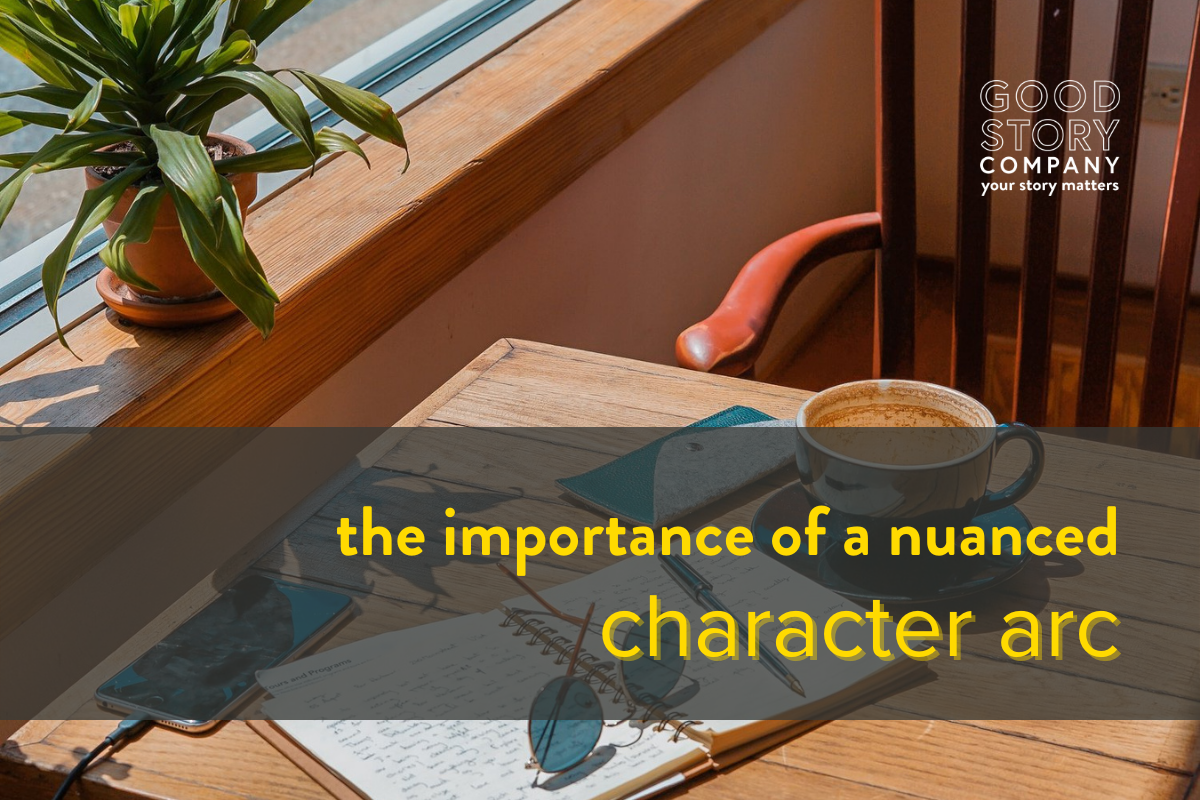The Importance of a Nuanced Character Arc
A character arc is meant to look like its name: an arc. Too often in books we see character development that looks more like a flat line with a spike at the end, followed by more flat line. I picture this as a scene from a hospital drama where a character has flat-lined then suddenly comes back to life, sits up and takes a gasping breath, and the heart monitor spikes in the background.
Characters enter familiar scenes throughout novels. Their character arc shows how they handle each scene differently.
BUILDING A CHARACTER ARC
The hospital scene reflects how I feel reading stories where characters behave and react the same way all through the story, until a sudden epiphany near the end, and we’re expected to believe this epiphany will change everything and they’ll move on differently.
Maybe they will, but human behavior is often subtler than that. Few of us change overnight. We might wake up one morning and realize we’ve changed, but when we look back we can see it was the result of a million little things, day after day, that brought us to our current state.
Opening Stasis
In novels, this means we see the protagonist in their original form at the opening. There’s something they want, something they’ve set their sights on and are trying to achieve. This want is offset by what they need, yet can’t see. The reader might have a sense that the want won’t work out, particularly when the inciting incident comes along and slams them off course.
How the character reacts to the inciting incident is the first step in how they begin to change. There’s no going back. Their old world no longer exists. They need to actively step into this new future, and make decisions.
Plot Points
These decisions lead to the next plot points. Obstacles happen, and characters decide how to handle them. Each decision is a step on the path. And each decision contributes to the story’s momentum.
At the midpoint, generally we see a momentum shift. Something doesn’t turn out as planned. Whatever goal the character was working toward just hit a major bump in the road, and they need to recalibrate.
An Arc Takes Shape
This is where the shape of the character arc comes into play. For half the story, we’ve seen the character react similarly, make decisions based on their old way of thinking, trying to attain that original want. Now, though, it’s clear the want in its original form is no longer attainable. Here, the character makes the subtle shift to try to get what they need.
The character synthesizes what’s happened up to this point, and it causes them to behave differently. They aren’t doing a 180 from who they were at the beginning. They’re learning from experience. They’re modifying their behavior. They’re testing the waters of who they’re about to become.
This shift could come about after an argument they have with a friend, or their grand plan backfires, or they’re forced to recognize the consequences of their decisions. Even if the first part of the story has positive momentum, at the midpoint this shifts. The characters only thought things were going well, and now they’re forced to confront the reality that they aren’t, or that they were wrong.
The Aha! and the Nuance
Now, most people when they realize they’re wrong, even if they can admit it, will still rush to defend themselves. So do characters. But that recognition is what plants the seed of change, which then builds to the climax, where the character typically has their Aha! moment.
To keep the Aha! moment from looking like the blip on the heart monitor, the small decisions that lead up to it will build on each other in a natural progression. Maybe that moment is an apology. Maybe it’s the character using someone else’s suggestion instead of insisting on their plan. Or maybe it’s the character thanking others for helping, recognizing they wouldn’t have had this success if they hadn’t started asking for help back at the midpoint.
From here, the character’s change can be reflected back to them by the other characters, who notice the difference. Their direct thoughts can also contribute, recognizing what they’ve been through since the beginning, appreciating what they’ve taken away from the experiences, and looking forward to how their new selves will approach the future.
Arc Practice
To practice creating a character arc, write a scene that could happen at the beginning, middle, and end of your story. It can be simple: Character walks into a coffee shop and interacts with someone there (could be positive or negative). Maybe in the first scene, they’re too self-absorbed to notice what’s happening, and the other character has to get their attention. Then at the midpoint, they notice the other character, but need to be prompted to say something. And then at the end, they walk in and start the conversation with the other character.
Think of a few other scenarios, and notice the small changes in action and reaction your character makes. Or, picture your story as a mockumentary, a la The Office. If your character were interviewed with the same set of questions at the beginning, middle, and end, how would their answers change?
Nuanced characters draw readers into stories. When those nuances shift on a well-developed character arc, the plot will also become stronger. This creates the un-put-downable quality readers look for, and makes for a memorable, satisfying story.
Kristen offers manuscript coaching at Good Story Editing to help you hone your perfect character arcs.

